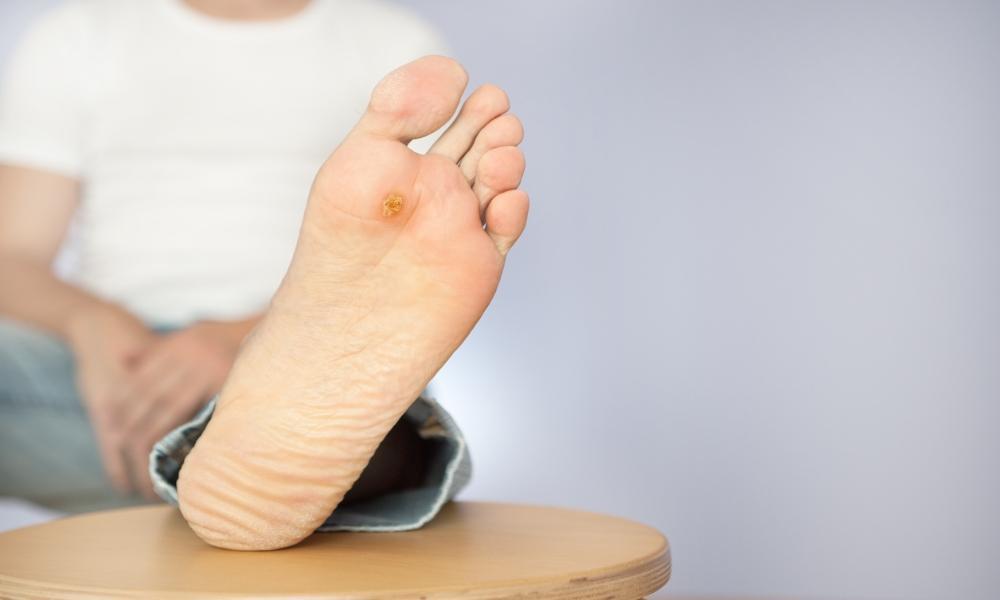Diabetes can cause serious complications, and one of the most concerning is foot ulcers. How to care for a diabetic foot ulcer at home is a critical question for those managing diabetes, as untreated ulcers can lead to infections or even amputations. Proper home care can promote healing, prevent complications, and improve overall foot health.
Understanding Diabetic Foot Ulcers
A diabetic foot ulcer is an open sore or wound that typically develops on the bottom of the foot. These ulcers form due to a combination of factors such as:
✔ Poor circulation – Diabetes reduces blood flow, slowing healing.
✔ Neuropathy (nerve damage) – Decreased sensation means injuries go unnoticed.
✔ Infections – Open wounds become breeding grounds for bacteria.
✔ High blood sugar – Excess sugar weakens the immune system, delaying healing.
If left untreated, these ulcers can become severe, leading to hospitalization or even amputation, making proper diabetic home care essential for preventing further complications. That’s why knowing how to care for a diabetic foot ulcer at home is essential.

Step-by-Step Guide: How to Care for a Diabetic Foot Ulcer at Home
1. Keep the Wound Clean and Dry
- Wash the ulcer daily with mild soap and warm water.
- Pat it dry gently with a clean towel—never rub.
- Avoid soaking your foot, as excessive moisture can slow healing.
2. Apply an Antiseptic and Cover the Ulcer
- Use an antiseptic like povidone-iodine or chlorhexidine to prevent infection.
- Cover the wound with a sterile, non-stick dressing to keep bacteria out.
- Change the dressing at least once daily or as advised by a doctor.
3. Reduce Pressure on the Affected Foot
- Avoid walking barefoot or applying pressure on the ulcer.
- Wear diabetic-friendly shoes or offloading footwear to reduce stress on the wound.
- Consider using crutches or a walker if the ulcer is severe.
4. Monitor for Signs of Infection
Keep an eye out for symptoms such as:
⚠️ Increased redness, swelling, or warmth around the ulcer.
⚠️ Pus or foul-smelling discharge.
⚠️ Fever or chills (signs of a systemic infection).
⚠️ Pain that worsens instead of improving.
If you notice any of these signs, seek medical attention immediately.
5. Maintain Good Blood Sugar Control
- High blood sugar levels slow healing, so monitor your glucose levels regularly.
- Follow a diabetic-friendly diet rich in protein, fiber, and vitamins.
- Take prescribed medications or insulin as directed by your doctor.
Best Home Remedies for Diabetic Foot Ulcers
While medical treatment is essential, some home remedies may help in the healing process:
1. Honey Dressing
Studies show that honey has antibacterial and anti-inflammatory properties that promote wound healing. Apply raw honey on a clean dressing and place it over the ulcer.
2. Aloe Vera Gel
Aloe vera is known for its soothing and healing properties. Apply fresh aloe gel to the ulcer for faster recovery.
3. Turmeric Powder
Turmeric has natural antimicrobial properties. Mixing turmeric with water to form a paste and applying it to the ulcer may help prevent infections.
4. Coconut Oil
Coconut oil has moisturizing and antibacterial effects. Gently apply it around the ulcer to prevent dryness and promote healing.

When to See a Doctor for a Diabetic Foot Ulcer
Even if you’re following the best advice on how to care for a diabetic foot ulcer at home, some situations require immediate medical intervention. Seek a doctor if:
🔴 The ulcer is not healing after two weeks despite proper care.
🔴 You notice signs of infection such as swelling, pus, or a foul smell.
🔴 The ulcer becomes black or necrotic, which may indicate tissue death.
🔴 There is increased pain or numbness in the affected foot.
Early medical intervention can prevent complications and may save your foot from amputation.
How to Prevent Diabetic Foot Ulcers at Home
The best way to handle diabetic foot ulcers is to prevent them in the first place. Here are some essential prevention tips:
1. Inspect Your Feet Daily
- Check for cuts, blisters, or redness every night.
- Use a mirror or ask a family member to inspect hard-to-see areas.
2. Keep Feet Moisturized
- Dry skin is prone to cracks, which can lead to ulcers.
- Use diabetic foot creams to keep the skin hydrated.
3. Trim Nails Carefully
- Cut nails straight across to prevent ingrown toenails.
- Avoid cutting too short or rounding the edges.
4. Wear Proper Footwear
- Choose diabetic-approved shoes that offer good support.
- Always wear clean, dry socks to prevent friction.
5. Control Your Diabetes
- Monitor blood sugar levels regularly.
- Follow a healthy diet and stay physically active.
The Hidden Dangers of Ignoring a Diabetic Foot Ulcer
Did you know that one in every five diabetic foot ulcers leads to amputation? Many people ignore the early signs, thinking it’s “just a small wound.” But diabetic ulcers can quickly become life-threatening infections.
Real-Life Case: The Man Who Ignored His Diabetic Foot Ulcer
A 55-year-old man ignored his small ulcer for months. Eventually, he developed gangrene, and doctors had to amputate three of his toes to save his life. This could have been avoided with proper home care.
This real-life example serves as a wake-up call: If you or a loved one has a diabetic foot ulcer, don’t wait. Start proper care today!
Final Thoughts on How to Care for a Diabetic Foot Ulcer at Home
Learning how to care for a diabetic foot ulcer at home is essential for preventing complications and promoting healing. The key steps include cleaning the wound, applying antiseptics, reducing pressure, monitoring for infection, and controlling blood sugar levels.
However, if the ulcer worsens or shows signs of infection, don’t hesitate to seek professional medical help. Prevention is always better than treatment, so maintaining good foot hygiene and managing diabetes is crucial.
If you found this article helpful, share it with others who might need this life-saving information!

Heart 2 Heart: Providing Home-Based Care for Diabetic Patients
💙 Compassionate Care, Right at Home! 💙
Managing diabetes requires constant attention, and at Heart 2 Heart, we’re here to support you every step of the way. Our dedicated caregivers provide personalized, home-based care for diabetic patients, ensuring comfort, safety, and better health outcomes.
✅ Blood sugar monitoring & medication reminders
✅ Diabetic foot care & wound management
✅ Nutritional guidance & meal preparation
✅ Compassionate companionship & lifestyle support
📞 Contact Us today to learn how we can help you or your loved one manage diabetes with expert home care.

